#Japanese N4
Text
にくい - Difficult to, Hard to
Verb in noun form[ます]+ にくい
Polite: Verb in noun form[ます]+ にくい + です
Like 易い (やすい), にくい is an い-Adjective that is regularly attached to the ます stem of verbs, communicating the difficulty of performing the verb that precedes it. In other words, the verb, aka whatever is difficult to do, will always come before にくい.
The nuance of にくい is that a task is difficult to do because of the required skill level or similar factors.
私には英語の「Literally」という単語がとても言いにくい。For me, the English word ‘literally’ is very hard to say. (Hard due to the individual's skill level)
アフリカには行きにくいです。It is hard to go to Africa.
This is different from づらい, which focuses more on a task that is difficult due to being unbearable/hard to endure for some other reason (such as emotional). For example:
お前には本当に言いづらいけど、お前のギターを壊した。ごめん。This is very difficult for me to say to you, but I broke your guitar. I'm sorry. (Hard because the speaker knows that telling the listener will cause a negative response)
#japanese#learn japanese#japanese studyblr#how to learn japanese#studyblr#learning japanese#hiragana#japanese beginner#japanese langblr#japanese for beginners#N4#n4 grammar#japanese n4#japanese lesson#japanese grammar#learn how to speak japanese
84 notes
·
View notes
Text
Ah, it's been a long, long time away and so much has happened. I've graduated from college and I've been working for the last year and a half... Yeah, I can't seem to believe it myself. It's crazy how these years go by so fast and in such a haze.
A major thing about working in this industry is realizing how quickly you can get left behind if you don't learn at every turn. The bar keeps rising, and that is one of the many reasons I chose this major and this profession.
I don't think I have the means financially or mentally to get a Master's degree now. But for as long as I am here I'd like to always keep learning. This community is so wonderful and accepting, and I hope to study more in the coming months. Also, the thrill of academic validation is real. I can't wait to have it again.
This year I plan to finally go through with some certifications and my Japanese N4 exam. I want to learn about new technologies and new languages while getting better at the ones I know.
And as usual, よろしくおぬがいします。
5 notes
·
View notes
Text
The 6 Differences Between は and が
DIFFERENCE 1
The important fact is AFTER は
• この犬は私のベットです。This dog is my pet.
You want to emphasize that this is not a stray dog. It is not someone else's pet dog. It is MY PET. So anything comes after は is the main part you want the listener to pay attention to.
The important fact is BEFORE が
• この犬が私のベットです。This dog is my pet.
You want to emphasize that THIS IS THE DOG that is my pet. Not other dogs. Imagine you're at a park and there are 3, 4 other dogs playing together with your dog and you want to tell your friend that THIS DOG is the one that is your pet dog, other dogs are not yours. So, what comes before が is the main part you want to tell the listener.
More examples:
• このケーキはおいしいです。This cake is DELICIOUS! (You want to tell your friend that this cake is indeed very good. Your emphasis falls on おいしい, so you use は, because the important fact is AFTER は.
• このケーキがおいしいです。THIS CAKE is delicious. (You want to tell your friend that among all the cakes on the buffet table, this particular cake you are pointing to is the most delicious one. Others are not good.) Your emphasis falls on このケーキ (THIS CAKE), so you use が, because the important fact is BEFORE が.
DIFFERENCE 2
New information and things that you mention for the first time, use が. Old information or topics that have been mentioned earlier but is now repeated again, use は.
• 学校にマイクという男がいます。There is boy named Mike in my school.
You started the conversation with your friend by saying there's a new student named Mike in the school. That is the first time you mentioned Mike. It is new information, therefore use が.
• マイクはアメリカ出身です。Mike is from America.
You mention Mike the 2nd time now and it is no longer a new information. It is considered old information, therefore use は.
DIFFERENCE 3
Stating facts without adding your personal opinion or judgment use が. By adding your own opinion or judgment, use は.
• 外に猫がいます。There is a cat outside.
You are just merely stating a fact that there is a cat outside. This sentence doesn't include your description about the cat. No personal opinion or judgment about the cat.
• あの猫は白いです。The cat is white in colour.
You are putting your description, your judgment into the sentence about the cat. When you are adding your own thoughts, opinion, description about something, use は.
• 日本の料理はおいしいです。Japanese food is tasty.
You are putting your opinion/judgment about Japanese food in your sentence, therefore, use は.
DIFFERENCE 4
When you make comparison, use は. When you eliminate other options, use が.
• お茶は好きですが、コーヒーは好きじゃありません。I like tea but I don't like coffee.
DIFFERENCE 5
If two actions are done by the same person, use は. If two actions are done by two different persons, use が first, then use は for the second action.
• 私はごはんを食べるとき、テレビを見ます。I have my meal and I am watching TV.
• 私がごはんを食べるとき、父はテレビを見ます。When I have my meal, my father watches TV.
DIFFERENCE 6
To modify a phrase into a noun, use が.
• これは彼女が作ってくれたケーキです。
What cake is this? This is the cake that is baked by my girlfriend. The phrase 「彼女が作ってくれた」 is to modify the cake, to describe about the cake.
Quiz Time
• 部屋は広いです。
• 部屋が広いです。
In English, both sentences mean "The room is spacious." But what is the difference?
In 部屋は広いです, it shows a comparison contrast nuance (read DIFFERENCE 4). If you say this, the listener will believe that you are making a comparison of this room with all the other rooms in the house. You want to say this room is spacious, whereas the other rooms are smaller in size.
In 部屋が広いです, you are merely stating a general fact about this room being spacious (read DIFFERENCE 3). You are not making any comparison. Your sentence has no added personal judgement or opinion. You are stating a fact about the room being spacious.
#japanese#nihongo#studyblr#study blog#study japanese#study motivation#learning#learn japanese#language#grammar#jlpt#jlpt n5#jlpt n4#jlpt n3#jlpt n2#jlpt n1
157 notes
·
View notes
Text
JLPT Grammar みたいだ・らしい・っぽい
What is the difference in usage among みたいだ、らしい、and っぽい? These grammar points can be difficult to differentiate, so I have gathered some notes and examples here. These grammar points are JLPT N4 or N3 grammar points.
★みたいだ★

Used for first-hand information or information you are observing for yourself.
Often used for something that has characteristics of something else (metaphorical similarities).
Most common in spoken language.
ここの砂は星みたいな形をしている。
ここ の すな は ほし みたいな かたち を して いる。
The grains of sand here are in the shape of a star.
このアパートは誰も住んでいないみたいだ。
この アパート は だれ も すんで いない みたい だ。
It looks like no one lives in this apartment building.
明日は雨みたいね。
あした は あめ みたい ね。
It looks like rain tomorrow.
リンさんみたいに日本語がうまくなりたい。
I want to be able to speak Japanese as well as Lin.
★らしい★

Used for things you infer, or information you have from another source.
Often used to something that has especially strong characteristics of its group (stereotypical similarities).
Most common in spoken language.
今日は春らしい暖かい日でした。
きょう は はる らしい あたたかい ひ でした。
Today was a warm spring-like day.
*Note: It is spring, and this is a stereotypically spring day.
私は女性らしい洋服はあまり着ない。
わたし は じょせい らしい ようふく は あまり きない。
I don't often wear feminine type clothes.
寝すぎるのは体に悪いらしいです。
ねすぎる の は からだ に わるい らしい です。
Sleeping too much is apparently bad for your body.
*Note: Second-hand source of information.
今日は君らしくないな。
きょう は きみ らしくない な。
You don't seem like yourself today.
★っぽい★

Can be used to say what something is like.
Can be used to say that something appears to be the opposite of what you would expect.
Can be used to describe something that someone is likely to do or often does.
Note:
When following a noun or い-adjective, the meaning is similar to -ish, -like, -ly. The number of adjectives that can be used with this grammar are limited. Usually negative when used after a noun or adjective, but not always.
When following a verb, the meaning is easy to do, often do. This grammar cannot be used with all verbs.
あの小学生は大人っぽい。
あの しょうがくせい は おとなっぽい。
That elementary school student acts like an adult.
油っぽい食事は好きじゃない。
あぶらっぽい しょくじ は すき じゃ ない。
I don't like oily foods.
飽きっぽいから何事も成功しないのだ。
あきっぽい から なにごと も せいこう しない の だ。
You don't succeed in anything because you are quick to lose interest.
年を取ると、忘れっぽくなる。
とし を とる と、わすれっぽく なる。
As one gets older, one tends to become more forgetful.
#日本語#japanese#japanese language#japanese langblr#japanese studyblr#langblr#studyblr#文法#japanese grammar#jlpt n3#jlpt n4#tokidokitokyo#tdtstudy
144 notes
·
View notes
Text
N4 文法: はずがない
はずがない= cannot be (its impossible)
How to use:
verb stays in dictionary form + はずがない
For な-adjective you な before the はずがない, for nouns you add の before.
Examples:
彼はそなことを言うはずがない- he would never say that
そんなはずがない。- That cannot be true
彼女の話は本当のはずがない- her story cannot be true
そな大きな量を全部食べられるはずがない- there's no way you can eat that whole portion
#japanese#language learning#studyblr#日本語#japan#langblr#nihongo#learn japanese#study kanji#learn kanji#japanese grammar#jlpt n4
94 notes
·
View notes
Text

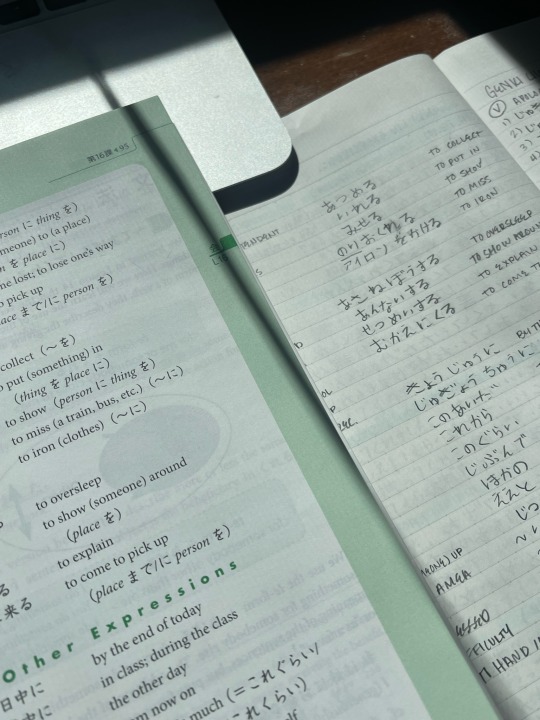
when am i not studying ☕️🏹🏛️
#studyblr#study blog#langblr#langblog#japanese langblr#japanese language#japanese#studyinspo#study motivation#study aesthetic#jlpt n3#jlpt#jlpt n5#jlpt n4#japanese kanji#studystudystudy#exam study#study buddy#study hard#study#study notes#study space#coffee aesthetic#coffee order
86 notes
·
View notes
Text
The Complete JLPT N4 Grammar Video(Game) Textbook
youtube
16 notes
·
View notes
Text
JLPT N4: -させる (-saseru) (causative form)
a bit of a hefty lesson, but it conjugates like any other japanese verb form. we'll get through this together.
causative form means to make or let somebody do something. to form a causative verb, transform -る in -る verbs into -させる, and the -う in -う verbs into -あせる.
食べる → 食べさせる (taberu -> tabesaseru)
飲む → 飲ませる (nomu -> nomaseru)
知る → 知らせる (shiru -> shiraseru)
読む → 読ませる (yomu -> yomaseru)
verbs in this form have different meanings depending on the context. it can mean either "let" or "make." The person making someone do something is indicated with particle が, は, or も. The person being made to do something is marked with particle に.
ロイスさんはピーターさんにメグちゃんを学校に持って行ったんですよ。- Lois had Peter take Meg to school.
ブライアンさんに3個のクッキーを受け取らせる - Let Brian receive 3 cookies.
スチューイちゃんは赤ちゃんだから、話させられませんよ!みなさんが怖くになります!- Stewie is a baby, so don't let him talk! Everyone will be scared!
私たちのショーって、全部の学生は見させたいな。。。- I want to make all the students watch our show...
36 notes
·
View notes
Text
Where to begin when reading native novels to work on reading comprehension?
So, you've made it to the point where you'd like to branch out and read some novels and children's books in Japanese? Then you've come to the right place! Let's talk about three helpful publishers (Kodansha, Kadokawa, and Shueisha) that can make reading native materials less daunting!
The Kodansha Aoitori Bunko Books (青い鳥文庫) were created and published by Kodansha with elementary schoolers in mind, so almost all kanji has furigana on it. The text is larger and there's normally a bit more spacing in between it (like our children's chapter books in English). Just like other children's chapter books, there are occasional photos included. Aoitori Readers include both original series as well as some translations of international literature (i.e., Little Women, Murder on the Orient Express, Sherlock Holmes, etc.). There are also some adaptations of other series はたらく細胞 (Cells at Work) Those books have blue around the cover.


The Kadokawa Tsubasa Bunko Readers (角川つばさ文庫) operate on the same concept, except the series are normally on a more advanced level. With this in mind, they may use more advanced grammar than the Aoitori series. There are original series, but sometimes books/series for a higher comprehension levels will be adapted into Tsubasa Bunko Readers. This includes popular Japanese novels and series as well as international classics (i.e., Chronicles of Narnia, Pippi Longstocking, Anne of Green Gables, etc.). For adaptations of Japanese novels and series, there will be the "regular" version of the novel and then the Tsubasa Bunko version bc it's the same kanji, same grammar, same words. It'll also supply the furigana for those kanjis and might give little annotations or some photos here and there. For example, the award-winning novel 夜は短し歩けよ乙女 (The Night is Short, Walk on Girl) by 森見 登美彦 (Morimi Tomihiko) has both the "regular" publication and the Tsubasa Bunko version. Tsubasa Bunko Readers have green around the cover. Click on the links to get a preview of each version to compare and contrast.
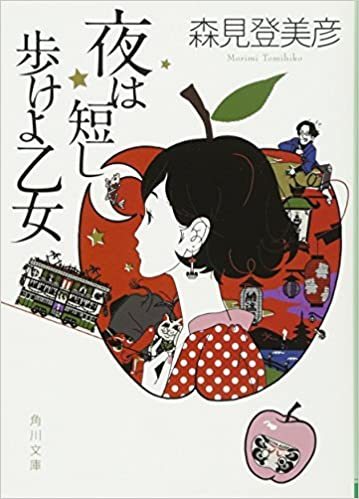

The Shueisha Mirai Bunko Books also operates the same. There are adaptations of manga series (like Kaguya-sama: Love is War and Demon Slayer) as well as original series. Mirai Bunko Readers have orange around the cover.


If you're worried about attempting to read any of these on your own, come suggest some of them for us to read together at the Seitokai Bookclub! (And even if it doesn't get selected immediately, someone might be interested in being a reading buddy with you :D).
Happy reading!
#onigiri thoughts#aoitori readers#tsubasa bunko readers#seitokai bookclub#japanese#japanese reading comprehension#mine#mirai readers#reading resources#looktoki#jpnstudynet#jlpt#japanese reading#jlpt n1#jlpt n3#jlpt n2#jlpt n4#jlpt n5#vocab#jlpt grammar#jlpt reading#jlpt studying#nihongo#learn japanese#kodansha#kadokawa#shueisha
418 notes
·
View notes
Text
Soon(tm)

#senchastudying#learning japanese#fountain pen#jlpt#jlpt n5#日本語#japanese#kanji#jlpt n4#studyblr#Tea#お茶
22 notes
·
View notes
Text
[N4] 日本のおもしろい妖怪(ようかい)
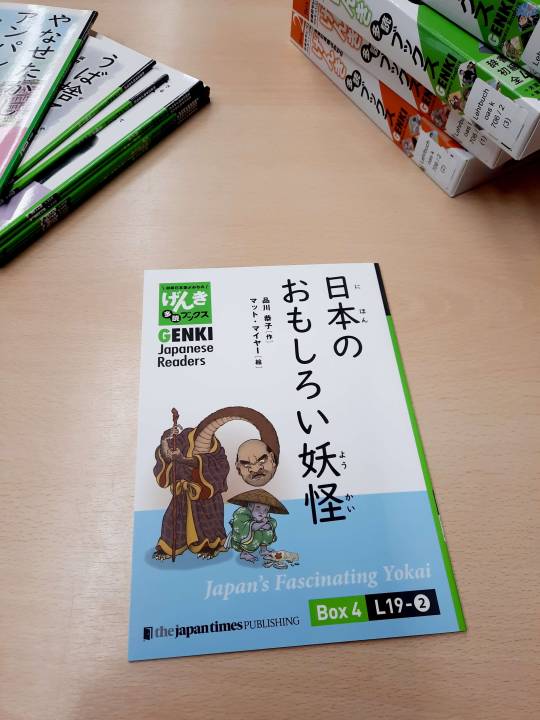
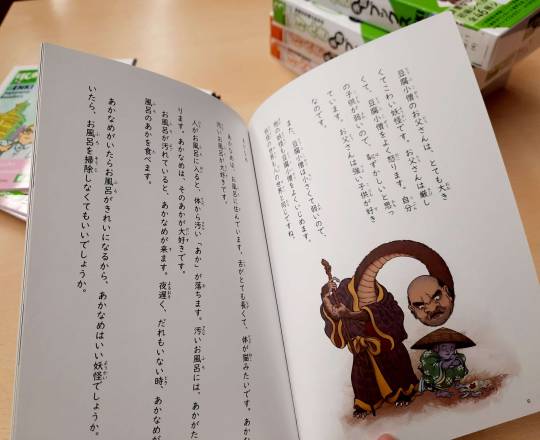
The library at my alma mater recently added the new Genki Tadoku graded readers for the fall semester. So, of course I had to go check them out when I was back in town last month!
This is my book review for a book on yōkai, which can be read right after finishing lesson 19 of the 2nd Genki textbook.
#my book reviews#reading in japanese#learning japanese#study japanese#日本語#japanese books#やさしい日本語#easy japanese#Fiction#genki tadoku books#ghost story#graded reader#japanese folklore#JLPT N4#N4#Non-Fiction#scary story#spirit#textbook#yokai
22 notes
·
View notes
Text
れる・られる Intro to Passive Verb Form
Disclaimer: This is N4 grammar. If you don't know the difference between ru (ichidan) verbs and u (godan) verbs, this post will be too difficult for you! You can read this article first.
If you need help reading kanji, I suggest downloading Yomichan. It helps you decipher texts quickly and easily that would otherwise be too difficult. More info on that here.
So without further ado, let's get into it!
Let's start with Tofugu's description: "The passive suffix 〜られる tells us that a verb is done to someone. It takes the emphasis off of who does the action, and places it on who is affected by the action." (But beware - The Japanese passive is not exactly the same as the English passive. More on that later.)
How to conjugate verbs to passive form:
-iru/-eru-verbs: Replace the last 「る」 with 「られる」
Examples
To eat: 食べる+られる = 食べられるto be eaten
To leave: 出る+られる = 出られる to be left
To close: 閉じる → 閉じられる to be closed
To see: みる → みられる to be seen
u-verbs: Change the last character as you would for negative verbs but attach 「れる」 instead of 「ない」
Examples
To drink: 飲む+ま+れる = 飲まれる to be drunken
To wait: 待つ+た+れる = 持たれる to be waited for
To buy: 買う+わ+れる = 買われる to be bought
To meet: 会う → 会われる to be met
To duplicate: 写す → 写される to be duplicated
To divide: 割る → 割られる to be divided
To write: 書く → 書かれる to be written
To learn: 学ぶ → 学ばれる to be learned
Irregular:
To come くる → こられる to have someone come
To do する → ��れる to be done
Conjugating れる・られる
れる・られる is an auxiliary verb (cannot be used by itself, must be attached to other verbs), treated as an ichidan verb. Even if a godan verb is in passive form, 〜れる takes the conjugation.
Polite form
〜れる → 〜れます
To get pierced 刺(さ)される → 刺されます
Plain negative
〜れない
To not get pierced 刺されない
Plain past
〜れた
Was pierced 刺された
Plain past negative
〜れなかった
Was not pierced 刺されなかった
Forming a Passive Sentence
There are three main parts to a Japanese passive sentence:
An action: the verb of the sentence.
A doer: the person (or thing) that the action is done by.
An experiencer: the person who the action is done to.
Xは Yに 〜られる。
Typical passive sentence: は (or が, or を) indicates the receiver of the action, に (or による) indicates the doer of the action, and then you use the passive verb suffix.
Examples:
私のアイスクリームを兄に食べられた。My ice cream was eaten by my brother. (This sentence instead uses を to mark ice cream as the direct object. In this case the same particle would be used even if the verb wasn’t in potential form → 私のアイスクリームを兄に食べました。→ My brother ate my ice cream.)
新聞がジョンに読まれた。 The newspaper was read by John
私は部屋を綺麗にして、褒められた。I was praised for cleaning my room. (This sentence does not indicate the doer - as in who was doing the praising - hence there being no green).
変な話を親に聞かれた。My strange conversation was overheard by my parents.
私の牛乳を全部誰かに飲まれた。Someone drank all of my milk.
Remember, oftentimes unnecessary elements are omitted. Therefore, the experiencer may be dropped from the sentence (especially when the experiencer is you or their identity is obvious from context). And, just like in english, the doer may also get omitted.
#japanese#learn japanese#japanese studyblr#how to learn japanese#studyblr#learning japanese#hiragana#japanese beginner#japanese langblr#japanese for beginners#intermediate japanese#jlpt n4#n4 grammar#japanese n4#japanese passive form#passive#passive verb#today i learned#study japanese
68 notes
·
View notes
Text
✧˚ ༘ ⋆。˚
[09 March '24 Japanese N4 log: T-119]
_____________________________________________
Going through Japanese grammar makes me sleepy. I want to improve my grammar by reading because it's how my English is this intuitive even though it's not my native tongue, but Japanese always comes off a disciplined language. Ah well.
Today's grammar notes below. Correct if required.
Verb-られます: Potential form of the verb. Used to describe the ability or possibility of something happening.
~ところ: describing a place, in the sense of "a place where we can get sushi" or "a place with a beautiful view".
Sentence (in plain/dictionary form)ってききました/っていっていました: used to convey an idea you have heard from someone else, or relay something someone has told you. Can be an opinion, rumor or news.
[Interrogative] Verb-たらいいですか: used to seek advice from someone about how to handle a situation, used with interrogatives.
#axis.n4#Japanese N4 prep#jlpt#jlpt n4#japanese language#studyblr#student#study blog#studyspo#japanese vocabulary#japanese langblr#nihongo#japanese#japanese grammar
13 notes
·
View notes
Text
The Difference Between に and へ
Most of the beginner textbooks will teach learners that に is used for destination and へ is used for direction but there are some explanation that are missing and that is what confusing to many learners.
• 公園に行きます。
• 公園へ行きます。
Both sentences are correct. Both means "I'm going to the park".
But... there is a slight nuance difference. When you use に, you put the destination (which is the park) as the main thing you want the listener to know that the place you want to go is the park. The final destination you will arrive at is the park.
On the other hand, if you use へ, you want the listener to feel that you are making a move, you are making a journey, a process, an effort to go to the park. In other words, へ somehow emphasize on your journey to a place.
Let's say you're flying from UK all the way to Australia, that will take at least 20-22 hours by flight. The journey is extremely long and you want the listener to feel that, so you could say by using the particle へ: 私はオーストラリアへ行きます。
Now, the following part is what most teachers or textbooks didn't tell you. A study shows that more and more Japanese people are using に, and へ has gone out of fashion. According to the survey, one of the reasons may be due to globalization and how easily people are connected around the world through the Internet that people don't feel the journey or the distance is long. Therefore, they don't see the need to use へ anymore.
WARNING!!!
There is a grammar point that you MUST use へ instead of に。The pattern is:
へ + の + Noun
Examples:
• 先生へのプレゼント。Gift for teacher.
• 帰宅への道。The way home.
Another situation which needs to use へ is when the news anchor announces this:
台風が北へ向かっています。
The typhoon is heading north.
If you use に and say 台風が北に向かっています, it means you are very sure that the typhoon will land in the north. No one can predict 100% where it will stop or land so it is incorrect to use に in this sentence.
---------------------------------------------------
Vocabulary used in this lesson:
公園 (こうえん) park, playground
プレゼント present, gift
帰宅 (きたく) home
道 (みち) way
台風 (たいふう) typhoon
北 (きた) north
#study japanese#japanese#jlpt#jlpt n1#jlpt n2#jlpt n3#jlpt n4#jlpt n5#language#learn japanese#nihongo#grammar
90 notes
·
View notes
Text
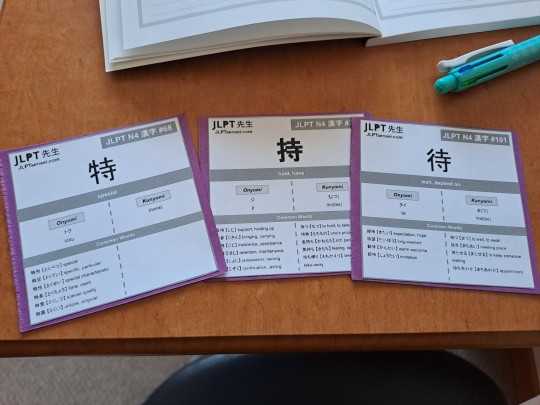
Sometimes I love kanji, and sometimes it does this to me
69 notes
·
View notes
Text
N4 文法:出す
出す(だす)= to suddenly begin, to suddenly appear
Verb take off masu + 出す= 笑います- 笑い出す= suddenly laugh
彼の話を聞いて、ついに笑い出してしまった。= when I heard his storyi suddenly burst out laughing
雨が急に降り出した =it suddenly started raining
彼は店から飛び出した= he suddenly dashed out the store
#japanese#language learning#studyblr#日本語#japan#langblr#nihongo#learn japanese#study kanji#learn kanji#jlpt n4
21 notes
·
View notes